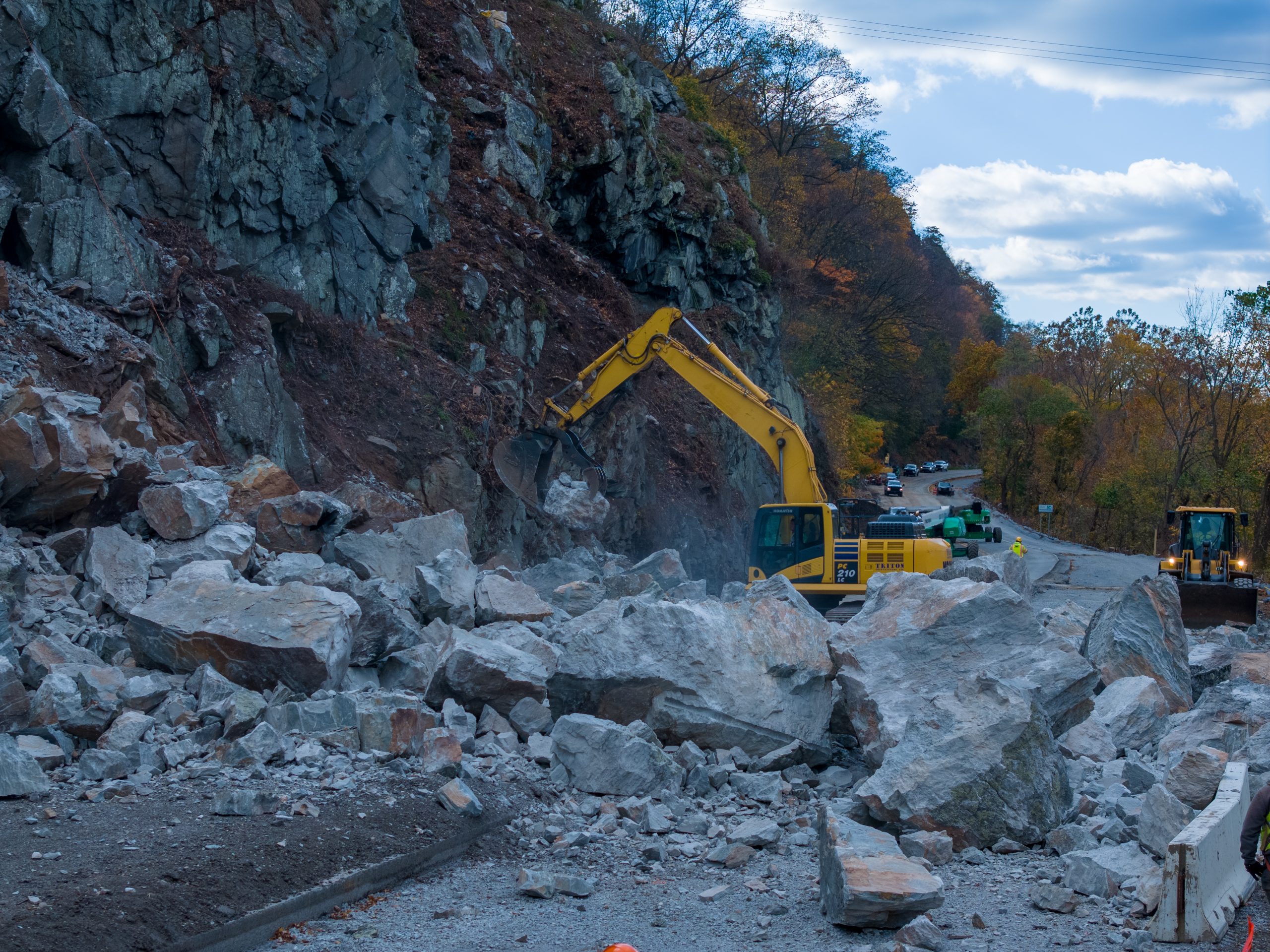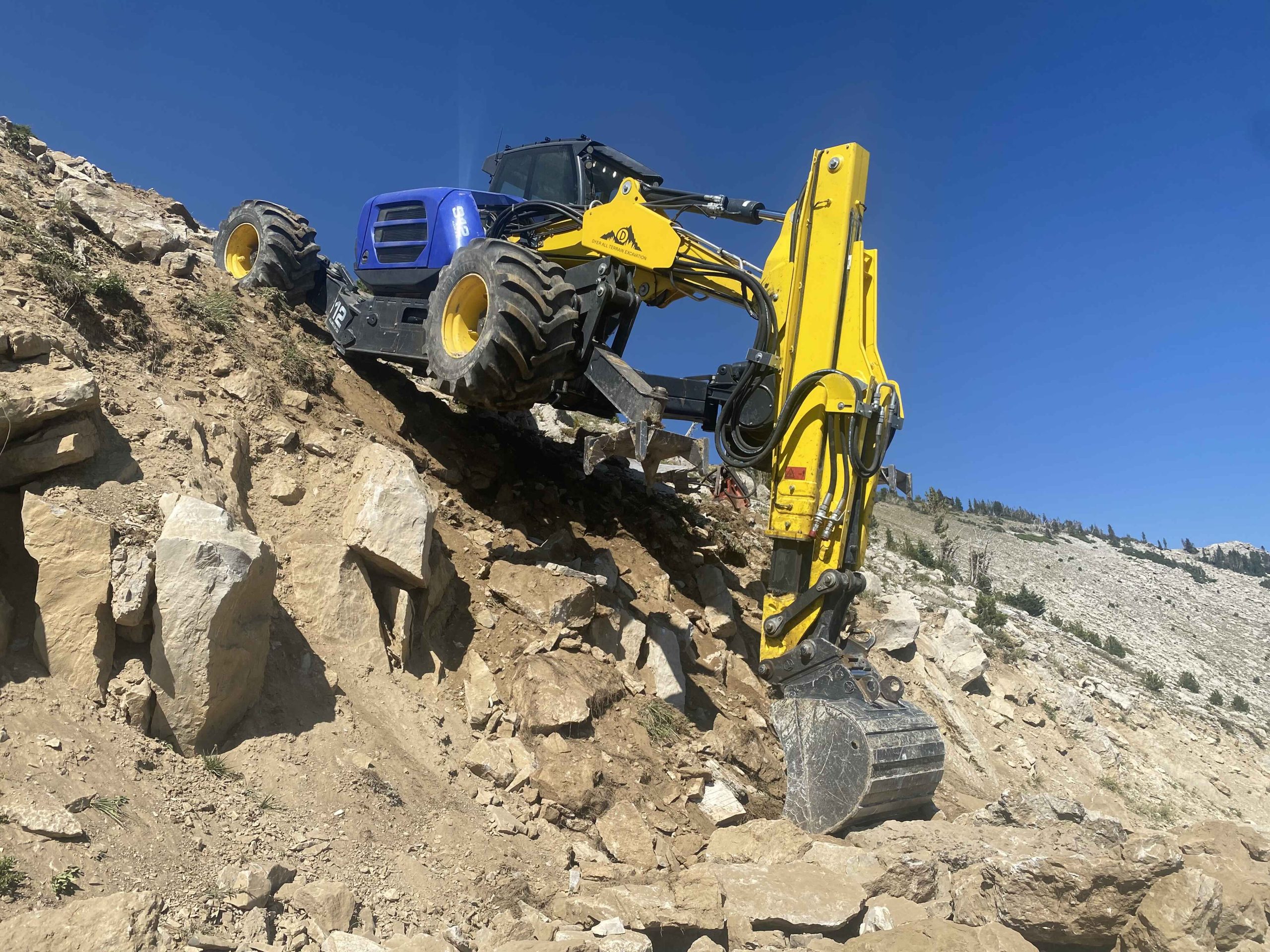Advantages of mechanical scaling
- Effective Risk Reduction
- Precise and Targeted
- Versatility
- Rapid and Efficient
- Long-lasting Solution
Mechanical scaling is a technique used in geohazard mitigation to address and reduce the risks associated with geological hazards such as rockfalls, landslides, and rockslides. Geohazards pose significant threats to infrastructure, transportation, and public safety, and various methods are employed to mitigate these risks.
Mechanical scaling involves the removal or reduction of unstable rocks or debris from a slope to minimize the potential for rockfall or landslide events. This process is typically carried out using specialized equipment and techniques.

This method involves manually removing loose rocks and debris from a slope using scaling bars or other handheld tools. It is often used in areas where access is limited or where larger machinery cannot be utilized effectively.
Excavators and backhoes are commonly employed to remove larger volumes of unstable material from a slope. These machines are equipped with specialized attachments, such as rock buckets or rippers, which allow for efficient scaling and removal.
In some cases, anchors or bolts may be drilled into the unstable rock to stabilize it and prevent further detachment. This technique is typically used in conjunction with other scaling methods to reinforce the slope and improve its stability.
Shotcrete, a mixture of concrete and reinforcing fibers, can be applied to the surface of a slope to provide additional support and prevent rockfall. This method is often used in combination with other scaling techniques to create a more robust and stable slope.
Wire mesh can be installed on a slope to reinforce it and prevent the detachment of loose rocks and debris. The mesh acts as a barrier, preventing the rocks from falling and reducing the risk of rockfall events.

Ready to mitigate geohazard risks and protect your infrastructure with our expert mechanical scaling services? Contact us today to discuss your project and find out how our specialized techniques and attention to detail can make a difference. Our team of professionals is ready to assess your site, provide cost-effective solutions, and ensure the long-term stability of your project. Don't wait until it's too late - take proactive steps to minimize the potential for rockfalls, landslides, and rockslides. Reach out to us now and let us be your trusted partner in geohazard mitigation.